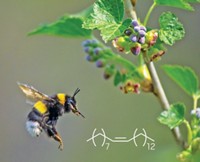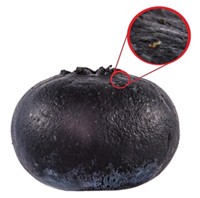Advertisement
Grab your lab coat. Let's get started
Welcome!
Welcome!
Create an account below to get 6 C&EN articles per month, receive newsletters and more - all free.
It seems this is your first time logging in online. Please enter the following information to continue.
As an ACS member you automatically get access to this site. All we need is few more details to create your reading experience.
Not you? Sign in with a different account.
Not you? Sign in with a different account.
ERROR 1
ERROR 1
ERROR 2
ERROR 2
ERROR 2
ERROR 2
ERROR 2
Password and Confirm password must match.
If you have an ACS member number, please enter it here so we can link this account to your membership. (optional)
ERROR 2
ACS values your privacy. By submitting your information, you are gaining access to C&EN and subscribing to our weekly newsletter. We use the information you provide to make your reading experience better, and we will never sell your data to third party members.
Biological Chemistry
Chemical Vital Signs
Living ants mask ever-present death cues with molecular indicators of vitality
by Carmen Drahl
May 11, 2009
| A version of this story appeared in
Volume 87, Issue 19
In "Monty Python and the Holy Grail," a film send-up of the Middle Ages and Arthurian legend, an elderly man resists being carted away from his village atop a pile of diseased corpses, loudly protesting, "I'm not dead yet." A new study suggests that ants have a chemical way of broadcasting that same information, which tells their nest mates not to toss them onto the rubbish heap.


Social insects such as ants carry dead colony members away from their nests to reduce the risk of disease. Traditionally, researchers have suggested that chemical decomposition products that accumulate after death stimulate ants to remove their former colleagues. But by studying Argentine ant workers, entomologists Dong-Hwan Choe, Jocelyn G. Millar, and Michael K. Rust of the University of California, Riverside, now provide evidence for an alternative explanation. They suggest that all ants, alive and dead, constantly carry chemical cues for disposal, but that live ants also possess molecular signals of vitality, which mask those of death (Proc. Natl. Acad. Sci. USA, DOI: 10.1073/pnas.0901270106).
By using thin-layer chromatography and gas chromatography to compare live, just-killed, and dead ants, the team showed that a subset of chemicals disappeared from the ants' outer covering within one hour of death. From those extracts they identified two rapidly dissipating "do not discard" signaling chemicals—specific isomers of the natural products dolichodial and iridomyrmecin.
The team then rubbed ant pupae, which are immobile and have different chemicals on their outer coatings compared with adults, with both dolichodial and iridomyrmecin or with extracts from ants that were dead for at least one hour. They then dropped the pupae at the entrance to the nest. Normally, workers retrieve pupae and return them to the nest, but pupae treated with the do-not-discard chemicals were ignored without being carried until the chemicals dissipated, at which time the pupae were returned. Pupae treated with extracts from the dead ants were placed in the refuse pile. The team now hopes to apply their findings to develop pest-control strategies.
"Ants and other social insects are fascinating because they use a multilevel network of chemicals for communication," says Patrizia d'Ettorre, who studies communication in social insects at the University of Copenhagen. Although this exact signaling system may not be applicable to every ant species, the team's work is convincing because it combines behavioral and chemical studies, she adds.
Argentine ant workers ignore pupae treated with a mixture of the "do not discard" chemicals dolichodial and iridomyrmecin.




Join the conversation
Contact the reporter
Submit a Letter to the Editor for publication
Engage with us on Twitter